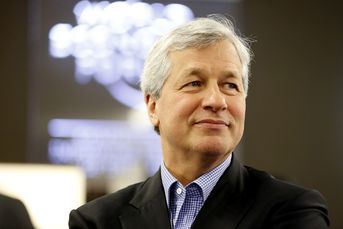Remembering Don Marron, consummate dealmaker
 1
1
With an eye for the future, Mr. Marron kept making deals well into his 80s.
“Financier and art patron” read the headline of The New York Times obituary for Donald B. Marron, who died Dec. 6 at the age of 85.
[More: Donald Marron, Wall Street veteran active in the IBD business, dies at 85]
From that description, it would be easy to conclude that Mr. Marron, who led PaineWebber for two decades, had an upper-crust background, so typical of Wall Street leaders of his era. But Mr. Marron’s roots actually were quite humble and — along with his drive, intelligence and foresight — may go a long way toward explaining why he became so successful and how his management skills and entrepreneurialism helped shape the financial advice business we know today.
The son of a writer and a housewife, Mr. Marron grew up in a five-story walk-up building in a working class neighborhood in the Bronx. In 1950, he graduated from the borough’s High School of Science, one of a handful of elite New York City high schools that require students to pass a rigorous entrance exam.
He went on to study business at City College’s Baruch School, now Baruch College, which at the time offered free tuition to New York City residents whose grades qualified them to attend. He left after a year, his wife told the Times, to support his mother, brother and sister.
After working as a researcher at New York Trust Company and Lionel D. Edie, an economic consulting firm, he started his own research-based financial firm, D.B. Marron and Company, in 1959. He sold it to the larger Mitchell Hutchins in 1965 and was named that firm’s president in 1967, transforming it into a leader in equity research at a time when institutional investors were growing and eager to pay for good advice.
[More: Lightyear Capital’s Donald Marron said to be in the hunt for Cetera Financial Group]
In 1969, while at his day job at Mitchell Hutchins, Mr. Marron co-founded Data Resources with Otto Eckstein, a Harvard University economist. The company became the largest non-governmental source of economic data and went public in 1976. Three years later, McGraw-Hill bought it for $103 million.
In 1977, PaineWebber acquired Mitchell Hutchins and the talents of Mr. Marron, who became the larger firm’s president. He added the titles of CEO in 1980 and chairman in 1981.
With an entrepreneur’s eye for the future, Mr. Marron sensed that individual investors would become increasingly important, and over the 1980s and 1990s, he transformed PaineWebber into a leading wealth management firm. From about 2,300 brokers when he took over, PaineWebber grew into the nation’s fourth-largest brokerage firm, with more than 8,500 brokers and 2.7 million customers.
Despite the growth, Mr. Marron foresaw the need for even greater scale. In 2000, he arranged the sale of the firm to Swiss banking giant UBS — at an estimated 47% premium over PaineWebber’s closing price the day before the acquisition announcement.
Continuing to look ahead, Mr. Marron saw growing opportunities in other areas of finance, especially in the independent broker-dealer and registered investment advisory parts of the market. In 2002, with the backing of UBS, he created Lightyear Capital, a private equity firm concentrating on the financial sector.
In 2010, Lightyear bought three broker-dealers from the ING Group and created Cetera Financial Group, which Lightyear sold in 2014 for $1.15 billion in cash. In 2016, the firm and PSP Investments bought Advisor Group from AIG. The two sold 75% of the independent broker-dealer earlier this year. Lightyear also bought and sold several RIA firms, including Wealth Enhancement, which it recently sold to TA Associates after owning it for four years.
[Recommended video: 6 reasons advisers should learn about ESG and impact investing]
Speaking to InvestmentNews’ Bruce Kelly after the Wealth Enhancement acquisition in 2015, Mr. Marron said: “This is a highly fragmented industry, but it’s consolidating. You can do acquisitions but they have to fit, with a focus on values and respect for how the business is done. You have to invest more capital back into the business, and you must have good management.”
The words of a true entrepreneur and business builder. He will be missed.
Learn more about reprints and licensing for this article.







